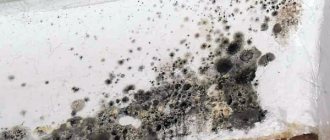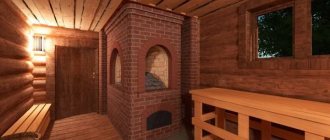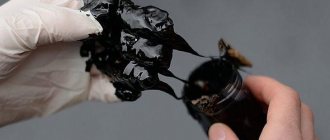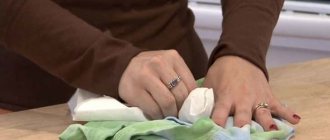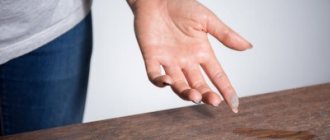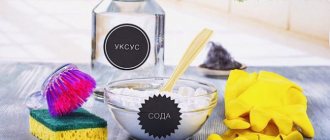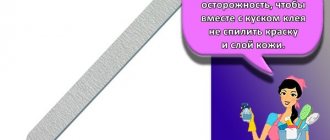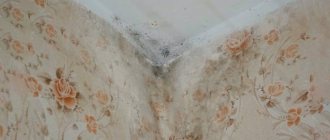The diverse and dangerous world of mold
The first signal that there is mold in the house is a change in the color of wooden surfaces, the appearance of characteristic blue, brown, pink and whitish spots, gray stains and a moistened surface.
Some fungi do not destroy the texture and do not penetrate deep into the wood, but they spoil the appearance of wooden wall cladding, floorboards, and ceiling trim. Mold appears not only in country houses built from rounded logs or timber, but also in city apartments with a poorly adjusted ventilation system or drafts. For example, on the lining, which is often used to decorate a balcony or loggia, unpleasant dark spots may appear.
Colonies of black mold appear on boards much less often than on stone, brick or tile grout, and blue mold is a frequent guest in houses made of timber.
Fungi like the very common blue fungus completely change the color of wood. They feed on protein, starch, sugar and grow quite quickly - a spot can double in size in just 10 days. But for this, one condition is necessary - the moisture content of the wood is higher than normal.
Blue is not believed to affect strength characteristics, so spore-contaminated timber and lumber are often tested for suitability, and mold may be present in a batch of lumber intended for renovation work.
The most dangerous fungus for wood is putrefactive fungus. It feeds on the fibers of the material, breaking them down with secreted enzymes. First, bright brown spots appear on the surface of boards and logs, and after a few weeks or months the wooden elements become unusable.
Sometimes the process of development of the hearth occurs secretly: several subtle stains appear on the upper part, but active destruction occurs inside. “Sick” parts of the cladding or frame can be recognized by a dull knock. A durable-looking timber, affected by rot, breaks when pressed.
Mold is harmful not only to the wood itself, but also to people who inhale air contaminated with spores. If there are allergy sufferers in the house, they will always feel unwell when outbreaks occur. Small fungi are also dangerous for healthy people - they can provoke the occurrence or exacerbation of various diseases of the respiratory system.
Image gallery Photos from
Mold colonies appear not only due to failure to carry out antiseptic treatment, but also due to violation of building rules, in particular, in the absence of ventilation holes
At the installation points of fasteners that have not been galvanized, mold appears literally in the first months after the construction of the house
Blue mold spreads at almost cosmic speed in bathhouses and bathrooms if they are not built according to the rules and problem areas are not treated with a water-repellent agent.
The appearance of blue mold on a new log house
Result of lack of ventilation
The result of using non-galvanized fasteners
Lack of waterproofing in baths and toilets
What is mold and why is it dangerous?
Black mold is a type of higher mold fungi from the genus Aspergillus. The international scientific name of the species is Aspergillus niger. The fungus looks like a dark coating that covers the surface in spots. If you look closely, you can see the fluffy structure of the mold. You can see what the fungus looks like in the photo below.
Black mold on the ceiling
Aspergilli are aerobic fungi, meaning they require oxygen for metabolism, growth and reproduction. Their mycelium penetrates very deeply into the walls, which makes it difficult to remove mold. They reproduce by spores. Having appeared in one place, aspergillus quickly spreads to nearby surfaces.
Of all types of mold, black mold is the most dangerous to human health, as it causes a disease such as aspergillosis. When inhaled, fungal spores enter the human respiratory tract, accumulating in the lungs, which leads to pulmonary diseases and can result in the death of the patient. There are several types of aspergillosis:
- Aspergilloma. A spherical tumor in the lungs, formed from plexuses of mycelium. In people with high immunity, it is asymptomatic. In diseases characterized by low immunity (AIDS, cancer, the period after organ transplantation), it provokes coughing with hemoptysis, up to and including fatal bleeding.
- Invasive aspergillosis. The course of the disease is acute and rapid. First there is shortness of breath, cough, fever. Without treatment, damage to internal organs occurs, including kidney and liver failure.
- Otomycosis. Damage to the ear canal, accompanied by itching, pain, and purulent discharge from the outer ear.
- Aspergilloma of the nasal sinuses. Accompanied by nasal congestion, headache, ulceration of the mucous membrane, nosebleeds.
Diagnosis is carried out using x-rays and CT scans, as well as through laboratory examination of sputum. To combat the disease, antifungal drugs are used; in advanced cases, surgical intervention is required.
Mold is understood as special microscopic fungi that invariably appear in musty and damp places in the form of a randomly spreading coating.
At the same time, of course, the appearance of the room is considerably spoiled: it is difficult to find something more repulsive and unpleasant. However, the matter is not limited to anti-aesthetics alone: mold poses a serious danger to human health and it would be very reckless for every sane person to underestimate this aspect. Here is an incomplete list of the body's reactions to contact with a fungus:
- severe allergic attacks;
- gastrointestinal disorders;
- skin diseases and irritations;
- suffocation, cough, asthmatic syndrome.
Rules for storing silver products
For cutlery, buy boxes with compartments lined with soft fabric. Jewelry is stored in a special box. Items should not be piled up; friction will cause scratches on them. In addition, the chain gets tangled and can be broken. It is permissible to put jewelry in separate plastic bags and store it in a common box.
Choose a place for decorations with normal humidity, away from heating devices and direct sunlight.
Basic rules for caring for silver jewelry
Knowing how to clean a silver chain, cutlery, or jewelry with stones, you won’t have any problems removing plaque. But it is easier to prevent discoloration than to fight it. A few recommendations will help maintain the beauty of your accessories:
- jewelry is removed before visiting a bathhouse, sauna, or taking a bath;
- promptly clean products from dust and dirt;
- before using creams and masks, remove the rings;
- wear protective gloves when doing household work - rings and bracelets can easily be scratched with a knife or brush.
Silver accessories do not cause any special trouble. Regular cleaning from darkening, polishing items with oil or preventive treatment with lipstick will help preserve the beauty of brooches, rings and earrings for a very long time.
Types of black mold
Aspergillus is a large genus of microorganisms with several species. Each of them can be classified as black mold, but the places where they appear and the degree of impact on humans will be different.
- White mycelium with black spores. Found in toilets and infects food. Toxic, promotes colds, allergic reactions and even cancer.
- Aspergillus fume. Present on damaged vegetables, fruits, and grains. The spores enter the body, where they infect red blood cells and greatly reduce immunity.
- Ulocladium. Lives in mattresses, sheets, toilets. Can provoke candidiasis, vaginitis, kidney and liver diseases. The insidiousness of the fungus lies in its “invisibility” - tests often do not show its presence in the body.
- Cladosporium (“kerosene mushroom”). It affects a wide range of objects: food, window frames, soil (house plants), household appliances (refrigerator), face and hand care products, clothing, house walls, fuels and lubricants. Promotes the development of severe allergies at any age, skin lesions (eczema, dermatitis).
- Black mycelium with white spores (“black rot”). It loves wooden or plastered surfaces, but is practically never found in residential buildings.
- Penicillium. Appears mainly in products: grains, cereals, dried apricots, prunes, coffee. Fungal spores are dangerous for children - they sharply suppress the immune system due to the harmful substance ochratoxin.
- Khetomy. It can appear and begin to reproduce on any surface. It is dangerous if it gets inside a person (with food): it causes poisoning, in severe cases there is a possibility of death.
- Alternaria. It has not only black, but also gray tint. Occurs on spoiled fruits, vegetables and grains, rotted leaves, and meat. From contact with a strain of these fungi, a person can expect itching, runny nose, dermatitis and severe asthma.
- Wallemia sebi is a fungus that does not like moisture; on the contrary, it prefers dryness and warmth. It is difficult to remove, but does not pose a danger to humans.
Causes of mold on wooden surfaces
It is difficult to completely isolate wood from mold spores, since they live almost everywhere. In addition, mold prefers “house wood”. It is not comfortable in the external environment - solar radiation kills mold, while in houses the conditions for its development are usually much better.
The main reasons for the appearance of fungus on lumber:
- Lack of protective coating on the wooden surface. Varnish, paint or any impregnation is applied specifically to protect against rotting (they do not provide a 100% guarantee, but they significantly reduce the likelihood of infection).
- Transfer of disputes. For example, spores can be on the walls, animals and people can carry them with them, and they can also settle on shoes or clothes (therefore, it is better not to store dirty things in wooden cabinets for a long time).
- High humidity in the room where wooden products are stored. The most relevant factor. For mold, 70%+ humidity is ideal.
- Lack of normal air circulation. An additional factor to the previous one. If the humidity in a room is high and the air stagnates, sooner or later mold will appear in it. If at the same time there are unprotected wooden surfaces, then there is a high probability that it will begin to develop on them (especially if these are corners or places not illuminated by the sun.
Why is it dangerous: consequences
Sooner or later, mold contamination reaches such serious proportions that any wood materials are subject to destruction. First, the surface part of the boards begins to loosen (this is already noticeable externally), then the product begins to deteriorate deeper.
Mold on wooden boards
Well, then the whole board turns into a piece of loose wood. True, this will require more than one month of time, so it is possible to notice damage long before such a result. Only in an old house that no one has entered for a long time can the boards rot completely. Everything rots - chipboard, fiberboard, and any wooden product.
Even before the wood begins to rot severely, its strength begins to decrease. This is dangerous for load-bearing structures that are subject to heavy loads.
Danger awaits the inhabitants of the house. Mold spores are a fairly strong allergen. They can cause the development of bronchial asthma - for a moment, a disease that cannot be completely cured.
Disputes can spread to other products and surfaces (wallpaper, clothing, shoes, bed linen). The larger the area of infection, the faster further spread will occur. That is, you cannot hesitate in such situations: removal must begin from the moment the problem is discovered.
Mold of any color is dangerous: it can be green, gray, white, black (usually in the last stages of rotting) and yellow (usually on plywood).
Where does the problem most often occur?
Mold has its own “favorite” places to appear. As a rule, they maintain the most comfortable conditions for her:
- where dampness is observed constantly or periodically (for example, after rain);
- where there is poor air circulation (in the bathroom, basement, attic, in country houses closed for the winter, in garages, in vegetable pits, in the steam room of a bathhouse);
- it often settles on wooden windows if condensation often accumulates there, and in winter the window rarely opens (or does not open at all for several months);
- on any surfaces where there is constant moisture, heat, low air circulation;
- in places with little sunlight (in the underground, on the ceiling, under furniture).
If we talk about specific places, then most often these can be:
- window frames;
- corners (both upper and lower);
- internal surfaces of walls bordering the street;
- places under and behind furniture, appliances;
- premises where people rarely visit: basements, attics, bathhouses;
- surfaces in confined spaces: underground, under the roof.
Mold rotting of boards
Keeping your apartment clean does not always guarantee protection against mold, although it significantly reduces the risks. Fortunately, it is much easier to remove mold from a well-maintained apartment than from an attic or basement.
Causes of wood destruction
Let's assume that the inside of the house was lined with absolutely healthy boards. However, over time, they also began to turn blue and gradually become covered with ugly stains. What does this come from?
Mold reproduces by spores that are present absolutely everywhere - in the forest, in the fields, on the roads. It is estimated that forest-dwelling species living on living trees cover approximately 40% of the surface area of the trunks and branches of these trees and shrubs. They do not destroy bark and other tissues, but make them more porous.
Spores are easily carried by wind, animals and even shoes. If microorganisms, by any of the listed methods, enter a house where favorable conditions have been created for them, they quickly begin to multiply. The ideal conditions for the existence of mold are high humidity (from 70%) and temperature from +5ºС to +30ºС.
Good ventilation and moderate humidity are two conditions necessary to prevent mold in areas where water is constantly used, such as the bathroom
Wood is just one of the materials on which entire colonies of fungi settle. They can grow on rubble stone, concrete, plaster, paper and even plastic.
Owners of seasonal country houses in central Russia know very well: if you do not regularly heat a wooden house or do not monitor the condition of the basement and foundation, then dark spots will certainly appear in the corners, on the ceiling and even on the furniture.
The same problem threatens cellars and wooden baths if ventilation is not organized in them. Even the interior lining of the clapboard can become infected with fungus and become completely unusable if it does not have the opportunity to ventilate and dry out.
The lack of air circulation also favors the rapid growth of mold colonies. This can be seen in city apartments, where bathrooms are lined with wood panels and ventilation is poor.
If the surface of the panels is not treated with a protective compound, they will soon become covered with a light white or black coating, and over time the cladding will take on a neglected appearance.
Pinotex Base – deep impregnation for the top layer of wood, acts as a primer and antiseptic. Used in combination with decorative products - Pinotex Wood Oil, Pinotex Classic, etc.
Thus, the reasons for the appearance of fungus or mold are the lack of waterproofing, disruptions in ventilation, and high air humidity.
Why does the board turn black?
There are many reasons for the appearance of black fungus on boards:
- poor ventilation in the room;
- high humidity;
- sudden changes in temperature;
- condensation formation;
- low-quality wood;
- contamination of building materials by fungal colonies;
- prolonged contact with damp soil.
Why is black mold on boards dangerous? Black fungus is dangerous not only because of its rapid spread, but also because of its negative impact on people and animals that are forced to inhale the spores. Black mold on lumber that is used to build a house or for interior decoration of residential premises can lead to contamination of absolutely all surfaces. In this case, the damage can be so serious that complete dismantling of wooden structures will be required.
How to remove mold from wooden surfaces without damaging the product
Wood should be processed outdoors or in a well-ventilated area.
If mold on the boards is detected in an advanced stage, you need to prepare for complex work, which consists of several stages.
- Cleaning up. It is necessary to remove all affected areas, including spores that have penetrated deep into the area. Start removing the top layers with a spatula. Use a chisel and knife only when the internal structure of the board is damaged.
- Disposal. All removed wood must be burned.
- Washing. Use a concentrated soap solution for this.
- Destruction of spores. The problem area must be thoroughly treated with a special antiseptic for the board. When the surface is dry, repeat the disinfection procedure.
- Finishing. After complete drying, sand the timber first with coarse sandpaper, then with fine sandpaper. Next, the material can be opened with varnish or tinting impregnation to match the color.
What happens if you don't fight mold?
A frivolous attitude towards infecting your home with mold can lead not only to damage to the interior, the gradual destruction of walls, ceilings and wooden floors, but also to a deterioration in the health of people and animals living within these walls.
Tiny fungal spores fill the air in the room. They settle on food products, rendering them unusable, and penetrate into people and animals, clogging the lungs and poisoning the body.
Harmful properties of mold.
Some types of mold can not only cause an allergic reaction or migraine, but also provoke nosebleeds, sinusitis and even the following serious diseases:
- asthma;
- pneumonia;
- emphysema.
Mold spores affect not only the lungs, but also the kidneys, liver and other vital human organs. Therefore, you need to get rid of mold as soon as it appears.
Kinds
The type of mold determines the choice of method that will help you effectively deal with it forever.
Black
Black mold is the most active and fastest growing of all. It usually destroys the surface quickly. There are several strains that cannot be distinguished from each other without special research.
It is very dangerous for humans, as if it enters the body it causes poisoning and allergies. Fighting black mold is quite difficult - it is not susceptible to most folk and chemical preparations.
Xin
Blue is not so dangerous for the human body, but it causes destruction of structures. Affects fresh and old wood, leading to its rotting. Particularly dangerous for load-bearing structures.
Putrefactive fungus
Putrefactive fungus spreads under conditions of high humidity in the room and the presence of external sources of moisture. Antiseptics and home methods can cope with it.
White
White mold affects not only furniture, but also food. It is easy to deal with, since it is not resistant to aggressive drugs. It does not pose any significant danger to the body.
Professional comprehensive treatment of premises against mold
Employees of the sanitary and epidemiological service have extensive experience in combating mold
Often, owners of residential or office premises prefer not to bother with the treatment of the premises themselves, but to let professionals do their job. The highest quality and professional removal of mold today is provided by employees of the sanitary and epidemiological service.
To get rid of mold in an apartment, employees of the SES (sanitary and epidemiological service) not only treat the affected areas, but after a thorough analysis of the room and its microclimate, they carry out an operation using fumigation technology, during which a special cloud of chemicals gets rid of various types of parasites and fungi and additionally disinfects the room.
When working in a private home, a set of measures is used to determine the source and causes of mold, accurately calculate the dosage of chemicals for use in a particular room, and select the most suitable type of antifungal substance.
Technologies used to get rid of fungus by professional SES employees:
- Hot fog generation is a very effective and fast way to get rid of mold, where a cloud of active chemicals is sprayed at high temperatures.
- Cold fog generation - spraying of an active chemical without the use of hot air.
- Wet disinfection involves wet treatment of affected surfaces and the entire room.
- Aeration is considered the most successful method of combating mold. In this case, gas with active chemicals completely fills the room, leaving no chance for parasites to spread.
Video “Methods of struggle”
From the video you will learn how to effectively combat mold on wood.
There are many methods, natural and synthetic products.
Folk remedies
Traditional methods against wood damage are gentle and effective, but they do not protect the material for long.
Medium 1: resin
Resin heated before application helps against fungal spores.
Pros:
- effective,
- safe,
- cheap.
Minuses:
- The surface remains sticky.
- The resin is viscous, difficult to apply, you need to stretch it.
Silicate glue diluted to a state of medium ductility is used. It is used to treat the surfaces of wooden products and coatings 1–2 times.
We suggest you read: How to adjust a plastic window so that it does not blow
This is a safe hypoallergenic composition. Has a short-term effect, not suitable for some types of mold.
A 5% solution of potassium dichromate and a 5% sulfuric acid concentrate are mixed in equal proportions.
The resulting solution is used to treat the boards and soil adjacent to the structures. The method is effective, but dangerous for the soil.
To get rid of an existing outbreak, sprinkle the area with soda and spray with 9 or 6% acetic acid.
Prepare a solution from 5 liters of hot boiled water, 1 kg of table salt, 50 g of boric acid. Mix thoroughly and process the wood.
Take 100 g of dry matter and dilute it in 10 liters of water. The boards are treated with the solution, then dried and used for construction.
Remedy 7: whiteness
Chlorine bleach works well to remove fungus, but keep in mind that the liquid lightens the wood.
In baths and saunas, it is possible to remove mushrooms only using folk remedies. To cure the affected area, clean the boards with soda, pour vinegar on them, and wait for the reaction to complete. Then wash off the reagents with water and cover the area with tea tree oil diluted in warm water.
Folk remedies are not always effective and safe. They are used when there are no special drugs at hand, and the problem needs to be solved quickly.
How to treat wood?
If it so happens that black mold appears on the boards, then it is necessary to fight it. For this purpose, a number of artificial and folk remedies have been invented, which we will dwell on in more detail. So, how to get rid of fungus using traditional methods:
- Use silicate glue. Application: mix the glue with water until it is fluid, but not too liquid, and apply it to wooden structures.
- Make a solution containing potassium bichromate (5%) and the same amount of sulfuric acid. Mix everything well in equal proportions and treat wooden walls, ceilings, shelves, etc.
- Apply (sprinkle) baking soda onto the surfaces affected by the fungus, and then spray with vinegar from a spray bottle.
- Dilute copper sulfate (100 grams) in a bucket of clean water and treat the wood surface.
- Melt the resin to a liquid-viscous state and cover the outer walls of the wooden structure with it.
- Mix five liters of boiled water with boric acid (50 grams) and table salt (1 kilogram). Apply the composition several times (with a two-hour interval) to wooden surfaces.
- Perform heat treatment.
These are excellent measures that will save the wood from damage by insects, mold, mildew, etc.
If folk remedies do not help, then you will have to use “heavy artillery” - varnish, paint or antiseptic.
Processing methods
Mold and mildew quickly darken and destroy wooden structures. Having seen the first signs of infection (discoloration), you should immediately begin treatment with disinfectant compounds. At the initial stage of development of pathogenic microorganisms, the spots are barely noticeable, but if left untreated, they quickly increase in size. It is important to remember that superficial removal of mold from wood will not achieve the desired effect - the spores grow at least 3-5 mm deep. Stages of mold removal:
- Infected areas are cleaned. The easiest way is to remove rot from the surface with a spatula, and if necessary, clean the inner layers with cutting tools (knife, chisel). You can also use a sander. The scale of impact is determined by the depth of fungal penetration. Sometimes it is enough to remove a thin layer.
- The removed wood is destroyed. Incineration is preferable.
- The cleaned wood is thoroughly washed with a solution of laundry soap.
- Dry and treat with an antiseptic.
For treatment, folk remedies and special anti-fungal compounds are used.
Folk remedies
Traditional methods of destroying mold fungi do not require significant financial costs, but have only a short-term effect. Popular methods include:
- treatment with heated resin;
- applying diluted silicate glue;
- to treat boards, 100 grams of copper sulfate are diluted in 10 liters of liquid;
- the use of Whiteness, a chlorine-containing agent for bleaching and disinfection. When fighting fungi, Whiteness is used in high concentration, diluted with water in proportions 1:1;
- treatment with hydrogen peroxide or ammonia;
- use of boron solution;
- use of acetic acid.
Folk remedies can be hazardous to health and are less effective than special formulations for antifungal treatment. It is acceptable to use for preventive purposes; with significant mold damage, complete destruction of pathogens is rarely achieved.
Special compositions against fungi
Antifungal compounds for wood contain fungicides - chemicals that suppress the activity of fungi, destroying spores and preventing the development of colonies. A properly selected antiseptic against fungus on wood will eliminate hotbeds of mold growth. Available in the form of varnishes, paints, impregnations. The composition is water-soluble, water-repellent, oil-based, solvent-based and combined.
Based on the level of absorption, they are divided into glazing (do not change the color and texture of the wood) and covering (affect the texture of the material).
Based on the period of action, they are divided into short-term protection and long-term prevention.
Well-proven products for treating wood against mold and mildew include products from the following companies: Tikkurila, Pinotex, Belinka, Neomid, Senezh. The compositions are safe, have certificates of conformity, and are recommended for interior and exterior work. Apply following the instructions and paying attention to the required temperature and dosage.
Folk remedies
How to effectively remove mold from various wooden surfaces? To do this, it is not necessary to spend a lot of money on purchasing expensive professional mixtures and preparations. It is enough just to arm yourself with effective folk remedies. These include:
- wood bleaches;
- antiseptics;
- hydrogen peroxide;
- vinegar;
- borax;
- ammonia;
- regular baking soda;
- pine or tea tree oil;
- grapefruit seed extract;
- drying oil or glue.
If you want to quickly get rid of a problem such as mold, but there is no way to spend a decent amount on purchasing chemicals, prepare a mixture of components that you have on hand. Treating the wood with a solution of baking soda, boric acid, or tea tree oil may not completely remove the mold, but it will go a long way toward solving the problem. In addition, such solutions can significantly enhance the effect of purchased drugs.
Removing mold in the early stages of infection
If mold damage is caught at an early stage, then it will be enough to clean off the damaged coating layer and carry out spot treatment. At the same time, it is imperative to ensure that the reasons that allowed mold to begin to grow are eliminated. The most difficult thing to remove is mold from wooden surfaces. Therefore, it is often safer to replace contaminated furniture or shelves with new ones.
Here are several options for treating surfaces that have begun to mold:
- In the early stages of development, mold on basement walls and wooden lintels can be removed with hydrogen peroxide or ammonia.
- “Belizna” or another product with a high chlorine content copes well with foci of infection.
- To remove harmful mycelium, you can use ordinary vodka.
Liquids can be sprayed from a spray bottle onto and around the infected areas. Or you can apply it with a wet cotton swab and leave it for deeper impregnation with the preparation.
If mold appears on a fire-resistant surface, you can heat the source of infection using a torch. Microorganisms die from high temperatures.
Fighting methods
How to get rid of mold in a chicken coop and other types of premises? There are many ways to do this. The modern market for such goods is represented by a whole variety of purchased products. There is no special technology, but it all depends on the manufacturer. In any case, before use, you just need to read the instructions and then follow the key requirements.
The fungus has been fought in our country since ancient times. However, at that time it was not known how to remove mold from wood, so houses affected by the fungus were simply set on fire. At the present stage, people are well aware of the main reasons for this kind of problem in the house, but still find it difficult to correct the situation.
It is best to prevent the creation of a favorable environment for these pests. That is, it is necessary to ensure constant air circulation in the room, as well as a low level of humidity. All of this combined will make your wood products less attractive to mold.
Prevention methods
The set of preventive measures will take less time than treating a simple fungus at home. Problems are easier to prevent, so it is important to ensure their ventilation in a bathhouse or wooden house.
Hydro- and vapor barrier
The main reason for the formation of pathogenic microorganisms is excessive humidity levels and the influence of steam. It is important to protect furniture and structures from this. Therefore, it is imperative to use special varnishes that protect the wood.
In a room where the humidity is always exceeded due to objective factors, for example, in a bathhouse, it is necessary to ensure a pleasant microclimate and regular ventilation.
Roof and foundation integrity
Before putting the house into operation, the roof and foundation must be covered with paints, varnishes and antiseptics. The appearance of fungus in these structures is not always noticeable, but as a result they grow and cause harm. Cleaning and application occur only on a clean surface; brushes, sprayers and rollers are used.
Vapor barrier membrane for protection against condensation
A vapor barrier membrane will protect against condensation and serve as an additional measure. The event is presented as a whole.
Fungus control agents
In modern supermarkets, markets and on the World Wide Web, a wide variety of anti-fungal products are sold. There is no point in talking about them in the article; for this purpose, there are instructions that describe in detail how to remove mold from wooden surfaces using this particular product.
Branded mold control products.
We will turn to the wisdom of our ancestors and tell you about folk methods for removing mold with your own hands. The choice of one method or another is up to you, let’s just say that it is wiser to use neutral compounds for housing. Chlorine or other chemicals will be absorbed into the array, as a result of defeating the fungus, you will receive chemical fumes in the house.
From your inventory, you will need a simple sprayer, plastic or enamel containers for diluting compounds, an assortment of soft and hard sponges, a small metal spatula or metal brush for particularly advanced cases, and as many rags as possible.
Many housewives know that small mold stains at the initial stage can be removed with table vinegar. It is collected in a spray bottle and sprayed onto the fungus. After which the mold is completely removed with a spatula or a hard sponge.
But we only removed the top layer; the roots could remain, so the vinegar is sprinkled on again and left for an hour. Next, remove the residue with a damp sponge and dry rag.
Soda with vinegar.
Regular hydrogen peroxide 3% copes well with this task. Having good antibacterial and disinfectant properties, it is able to completely remove fungus.
To do this, apply the composition to the affected surface and wait 10 minutes. Then scrape off the residue with a brush or spatula and wipe dry.
Standard peroxide solution.
Borax, being a good herbicide, when diluted with water, destroys any manifestations of fungus. To do this, you need to dilute a glass of the composition with two liters of water and you can get to work.
A brush or hard sponge will help you with this. After removing the dirt, the residues are removed with a dry cloth; there is no need to wash, this will prevent the appearance of outbreaks in the future.
A completely harmless way is to use baking soda. Everything here is extremely simple. You need to take a well-dampened sponge or rag and dip it in soda to clean off the mold.
When the work is completed, the infected area is sprinkled with dry soda and left until completely dry.
The question of how to remove mold from wood in a bathhouse deserves separate consideration. Chemicals are contraindicated here, so we will use only harmless materials.
First of all, we need tea tree or pine oil. Of course, the price for this product is considerable, but the good news is that you only need a little of it.
Tea tree oil.
We start with the banal removal of fungus with soda. To enhance the cleaning effect, you can also add vinegar. The instructions here are simple.
Sprinkle the moistened surface with baking soda and spray it with vinegar from a spray bottle.
When the chemical reaction stops (stops fizzing and bubbling), it all needs to be wiped clean and the surface generously sprinkled with an oil solution. For 200g of warm water use 2 teaspoons of oil. The composition will be absorbed for several hours, but at the end you get clean, pleasant-smelling wood.
Dry borax.
A more radical way is to use bleach. There is no need to take expensive chlorine compounds; ordinary whiteness is quite enough.
The bleach is diluted 1:1 with water and the fungus is removed using a sponge or rag. At the end of the work, the surface is washed with water and wiped dry. Please note that chlorine lightens wood.
An equivalent method can be considered using ammonia instead of chlorine. It is also diluted in equal parts with water and sprayed onto the affected area. After 4 – 6 hours, the plaque is brushed off and washed off with water.
Regular white.
The video in this article shows alternative ways to combat mold.
https://youtube.com/watch?v=XJRQPbBYqF4
Tools for fixing the problem yourself
After favorable conditions for the active development of fungus have been eliminated, measures can be taken to eliminate already developed mold on the tree. For this you can use chemicals. There is a list of solutions that can remove mold from wood. They are sold in construction and hardware stores. The most common means are:
- Dali - can be used for application on wooden, tiled, painted and concrete surfaces.
- Biotol spray - can be used to treat cellars, basements, attics and facades.
- Stop-Mold is a concentrated product that should be used to treat the areas most susceptible to fungal infections.
- Alpa - antifungal solution intended for interior work.
Before using such solutions, visible areas of fungus must be eliminated. After removing such lesions, it is necessary to rinse these areas with clean water. An antiseptic against fungus should be used only after the surface has dried. Usually it is necessary to apply the preparation in several layers - only then will it be possible to destroy the mold that is located in the thickness of the wood.
https://youtube.com/watch?v=MOUMM8kC_G0
How to remove fungus from wood?
If the spores have already entered your home, then several methods are suitable for removal:
- With the help of professionals. Here, a special team of people is invited for destruction, who perform an analysis, examine the scale of the damage and identify effective methods of destruction;
- Destruction of mold with chemical antiseptic solutions. They can be bought in stores. The choice of antiseptics and their manufacturers is quite large. Here, every buyer chooses according to his taste. Such mixtures can be used not only to destroy spores, but also to protect the material from fire, fungi and bugs. All properties of the drugs are written in the instructions. It is recommended to apply a similar composition to wooden products during installation;
- Traditional methods to help get rid of mold. This is the most accessible method for a wide range of people. It uses tools that are found in almost every home. And if not, then you can easily buy them for little money.
Now let’s look in more detail at some methods that will help remove mold from wooden surfaces.
How to remove blackness from wood?
"Slobodskoy Les" © 2012-2019
- home
- ›
- Good to know
- ›
- What to do if a log turns blue (black)?
- home
- ›
- Good to know
- ›
- What to do if a log turns blue (black)?
If your log turns blue or black, it’s time to take decisive action. No one is immune from the appearance of blue (rain, humid air) and blackness (sun, stuffiness). According to statistics, a rounded log or profiled beam with natural moisture deteriorates first; a chopped log lasts longer. If the situation is not neglected, everything can be fixed. You will have to spend money on sanding, bleaching and a good protective composition.
At the initial stage (house for shrinkage), solid wood, not treated with an antiseptic, is sensitive to fog and rain due to high internal humidity. Lingering autumn rains on wooden walls under long roof overhangs are not as bad as the humid heat in summer. Most of the standing timber these days is contaminated with fungal spores. It is enough to create conditions for the development of biological damage, and it will not take long to arrive. The log also turns black due to the use of a poor film-forming protective composition. Blackening (if not rot) and superficial blueness are removed without visible residue. The main thing is to stop further development.
Owners of blue houses are primarily concerned with the cosmetic aspect. Wood construction is much cheaper than brick. However, it involves investing money in the special atmosphere of a wooden house. When the result of construction deteriorates, disappointment and uncertainty about the future comes. Therefore, the second step is to eliminate the lesions. The advanced stage will require more time and costs. If the problem is not solved, the estimated service life of a wooden house will be reduced.
Effective folk methods of fighting fungus
At a time when people did not have access to today’s fashionable products, they used improvised and industrial liquids.
The most popular and truly effective remain:
- Ordinary table vinegar. To achieve the desired effect, you need to moisten the wooden surface with it. Next, use a metal or stiff brush to treat the affected area. Wash away any remaining contaminated wood. Re-treat the area with a spray bottle. Let dry (about an hour) and wipe again. In this simple way you can thoroughly clean almost any furniture.
- Hydrogen peroxide. Another simple and reliable home method for removing mold. It is necessary to apply a 3% solution of the drug to the affected area of the tree. Leave it for 10 minutes to absorb. Then use a brush to clean the “disaster” area. Wipe with a damp cloth and then with a dry cloth for final cleaning.
- Baking soda. The peculiarity of its effect remains the ability to absorb the smell of mold. This is especially useful when it comes to combating mold on your sofa or bed. To achieve the desired result, you need to moisten a rag in water and apply a little soda to it. Next, thoroughly wipe the affected area of the tree. Then rinse everything off and dry.
- Tea tree oil. A rather original method for cleaning furniture from mold. It has a powerful but gentle effect. In addition, it does not require a lot of the corresponding product to achieve the effect. For 1 liter of water you need 1 teaspoon of oil. This mixture is poured into a spray bottle, sprayed over the surface, cleaned with a stiff brush and wiped dry.
Another good remedy that will help solve the problem of how to remove mold from wooden surfaces is creosote. This is a specific yellowish oily liquid that is used to treat ship sleepers.
It is rarely used at home, however, it is perfect for cleaning technical or utility rooms. Due to its pungent odor and toxicity, working with it should only be done in a respirator and rubber gloves.
It is enough to first mechanically clean the wood and apply several layers of creosote. They cannot treat furniture with it.
How to get rid of mold on trees
Eliminating fungus from a wooden surface is not that difficult. To do this, you must follow the instructions. There is no need to rush - and then the result will please any housewife. When choosing a method to destroy fungus, do not forget about safety. That is why it is best to choose a method that can be used at home.
It is best to carry out the procedure with rubber gloves. In addition, such a remedy can be used as a prophylactic agent.
Every housewife has table vinegar in her kitchen. This product easily eliminates mold on wood. Apply vinegar to a sponge and then thoroughly rub into the fungus. After this, it is best not to touch the walls for an hour. After the specified time, the surface of the walls is wiped with warm water.
The basement, which is under the floor, is the main place where mold appears. That is why it is urgent to treat wooden structures to remove mold. Most often, professionals use special destruction solutions that can be prepared at home.
Mold under the floor is a common occurrence.
If desired, fungus on wood can be eliminated with a specially prepared paste. You need to mix 200 ml of water, 135 g of fatty clay and 150 g of sodium fluoride
It is important to use only sifted clay. The resulting paste is enough to process 1 sq.
meter.
If mold appears in your attic, you will have to spend time getting rid of it. The question arises, how to remove mold? The first step is to remove all affected wood. To do this, you can use a knife or a wire brush. After this, the cleaned area must be treated with any detergent, and then wait until everything dries.
Use special products to remove and prevent mold.
In the next step, an antiseptic is applied to the cleaned area. Now all that remains is to find out the cause of the mold and then begin to get rid of it.
